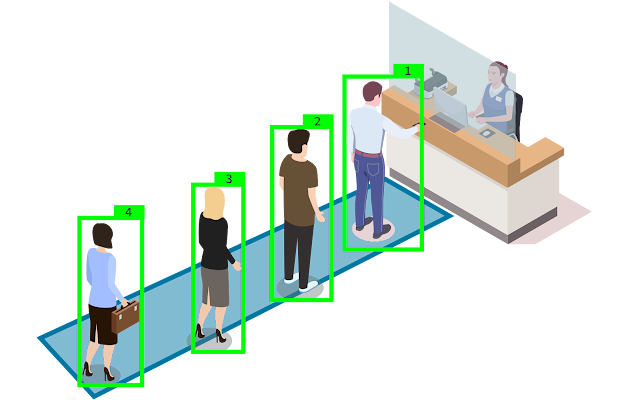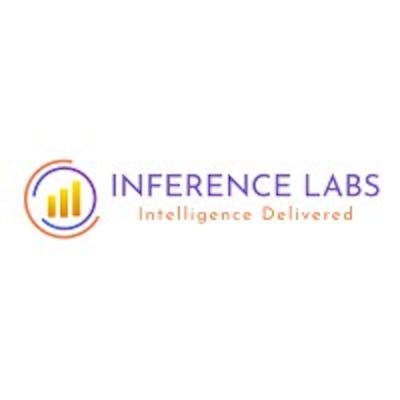Enhancing Customer Experience through Queue Time Prediction with Computer Vision
Table of contents
In today's fast-paced world, customer experience (CX) is paramount to business success. Long queues and waiting times can significantly impact customer satisfaction, leading to frustration and potentially loss of business. Fortunately, advancements in technology offer innovative solutions to address this challenge, and computer vision (CV) emerges as a powerful tool for predicting queue times and enhancing customer experience.

Understanding the Problem: The Impact of Queues
Customers value their time, and long queues can create negative perceptions. Studies have shown that:
60% of customers abandon their purchases due to long wait times. ([Source: https://www.investopedia.com/terms/q/queuing-theory.asp])
73% of customers say that valuing their time is a key aspect of good customer service. ([Source: https://qtrac.com/blog/how-a-queue-management-system-helps-your-small-business-stand-out/])
These statistics highlight the detrimental effect of long queues on customer satisfaction and business growth.
Introducing Computer Vision: A Technological Solution
Computer vision is a field of artificial intelligence (AI) that enables computers to "see" and understand the visual world. By analyzing real-time video footage, Computer vision algorithms can extract valuable information, including:
Number of people in a queue: This provides a direct measure of queue length.
Movement patterns: Analyzing customer movement helps predict how quickly the queue will progress.
Object detection: Identifying specific items like shopping carts or specific types of customers (e.g., with large orders) can further refine predictions.
Leveraging Computer Vision for Queue Time Prediction
Computer vision data, combined with historical data on customer service times and average transaction lengths, can be used to train machine learning (ML) models to predict queue wait times accurately. These models can then be integrated into various applications to enhance CX:
Real-time queue displays: Customers can see estimated wait times displayed in physical locations, mobile apps, or websites. This transparency fosters trust and reduces anxiety.
Dynamic signage: Based on predicted queue lengths, signage can dynamically inform customers about the best time to join a queue or suggest alternative service options like self-checkout or online ordering.
Resource allocation: Businesses can leverage queue predictions to optimize staffing levels by anticipating peak periods and allocating additional resources accordingly. This reduces customer wait times and improves overall operational efficiency.
Benefits of Queue Time Prediction with Computer Vision
Implementing Computer vision for queue time prediction offers numerous benefits for both businesses and customers:
For Businesses:
Improved customer satisfaction: Reduced wait times lead to happier and more loyal customers.
Increased operational efficiency: Optimizing staffing levels and resources reduces costs and improves productivity.
Data-driven decision making: Real-time insights into queue dynamics enable informed decisions regarding resource allocation and service improvements.
For Customers:
Reduced wait times: Customers spend less time waiting, leading to a more positive experience.
Increased transparency: Real-time wait time displays manage expectations and reduce frustration.
Improved decision-making: Customers can make informed choices about joining a queue or exploring alternative service options.
Addressing Potential Challenges and Ethical Considerations
While Computer vision offers significant advantages, it's crucial to acknowledge potential challenges and ethical considerations:
Accuracy and bias: Ensuring accuracy and avoiding bias in Computer vision models is crucial. Training data should be diverse and representative to prevent discriminatory outcomes.
Privacy concerns: Implementing Computer vision solutions must adhere to data privacy regulations and ensure customer data is handled ethically and securely.
Transparency and communication: Businesses should be transparent about the use of Computer vision and its purpose for queue time prediction.
By addressing these concerns responsibly, businesses can leverage the power of Computer vision ethically and effectively to enhance customer experiences while upholding privacy and inclusivity.

Conclusion: The Future of Queue Management
Computer vision presents a transformative approach to queue management, offering businesses a powerful tool to predict wait times and improve customer experience. By embracing this technology responsibly and ethically, organizations can create a more efficient and customer-centric future, fostering loyalty and driving sustainable growth.
